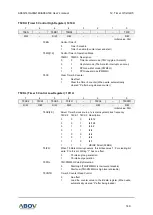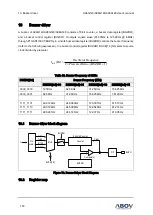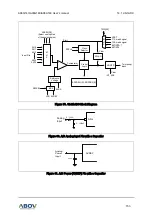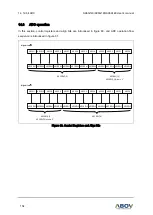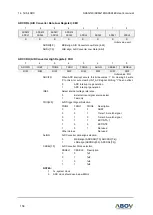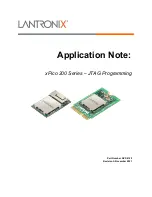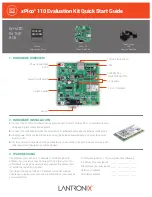
15. USI
A96G140/A96G148/A96A148 User’s manual
162
1 start bit
5, 6, 7, 8 or 9 data bits
no, even or odd parity bit
1 or 2 stop bits
A frame starts with a start bit followed by the least significant data bit (LSB). The next data bits, up to
nine, are succeeding, ending with the most significant bit (MSB). If parity function is enabled, parity bit
is inserted between the last data bit and the stop bit.
A high-to-low transition on data pin is considered as start bit. When a complete frame is transmitted, it
can be directly followed by a new frame, or the communication line can be set to an idle state. The idle
means high state of data pin. Figure 85 shows a possible combination of the frame formats. Bits inside
brackets are optional.
Figure 87. Frame Formats (USIn)
1 data frame consists of the following bits
Idle: No communication on communication line (TXDn/RXDn)
St: Start bit (Low)
Dn: Data bits (0~8)
Parity bit: Even parity, odd parity, no parity
Stop bit(s): 1 bit or 2 bits
A frame format used by the UART is determined by the USInS[2:0], USInPM[1:0] bits in USInCR1
register and USInSB bit in USInCR3register. The transmitter and the receiver use the same figures.
15.7
USIn UART parity bit
Parity bit is calculated by doing an exclusive-OR of all the data bits. If odd parity is used, result of the
exclusive-OR is inverted. The parity bit is located between the MSB and the first stop bit of a serial
frame.
[D7]
[D6]
[D5]
D4
D3
D2
D1
D0
[D8]
[P]
Idle
St
Sp1 [Sp2] Idle / St
1 data frame
Character
bits


